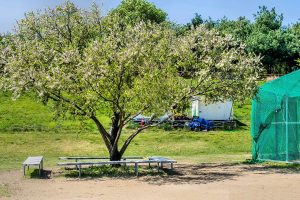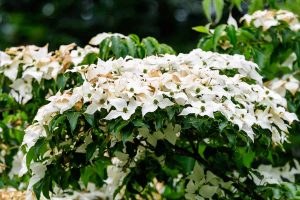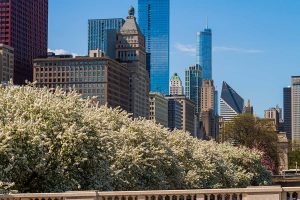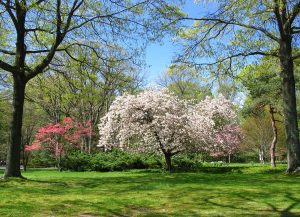Dogwood trees have a relatively short life expectancy compared with many other types of flowering trees.
In their native habitats or in ideal conditions, dogwoods are able to live for as long as 125 years. When conditions are not ideal, you can expect a dogwood tree to decline after just a few decades.
Here we explore life expectancy according to different species of dogwood and look into the ways you can help your dogwood live for as long as possible.
Table of Contents
Types of Dogwood and Life Expectancy
Different species of dogwood have different life expectancies, and these can also be heavily affected by the types of care they receive and the conditions they are grown in. To help extend the expected lifespan of your dogwood, aim to meet its preferred needs and avoid conditions that are just tolerated.
Flowering Dogwood (Cornus florida)
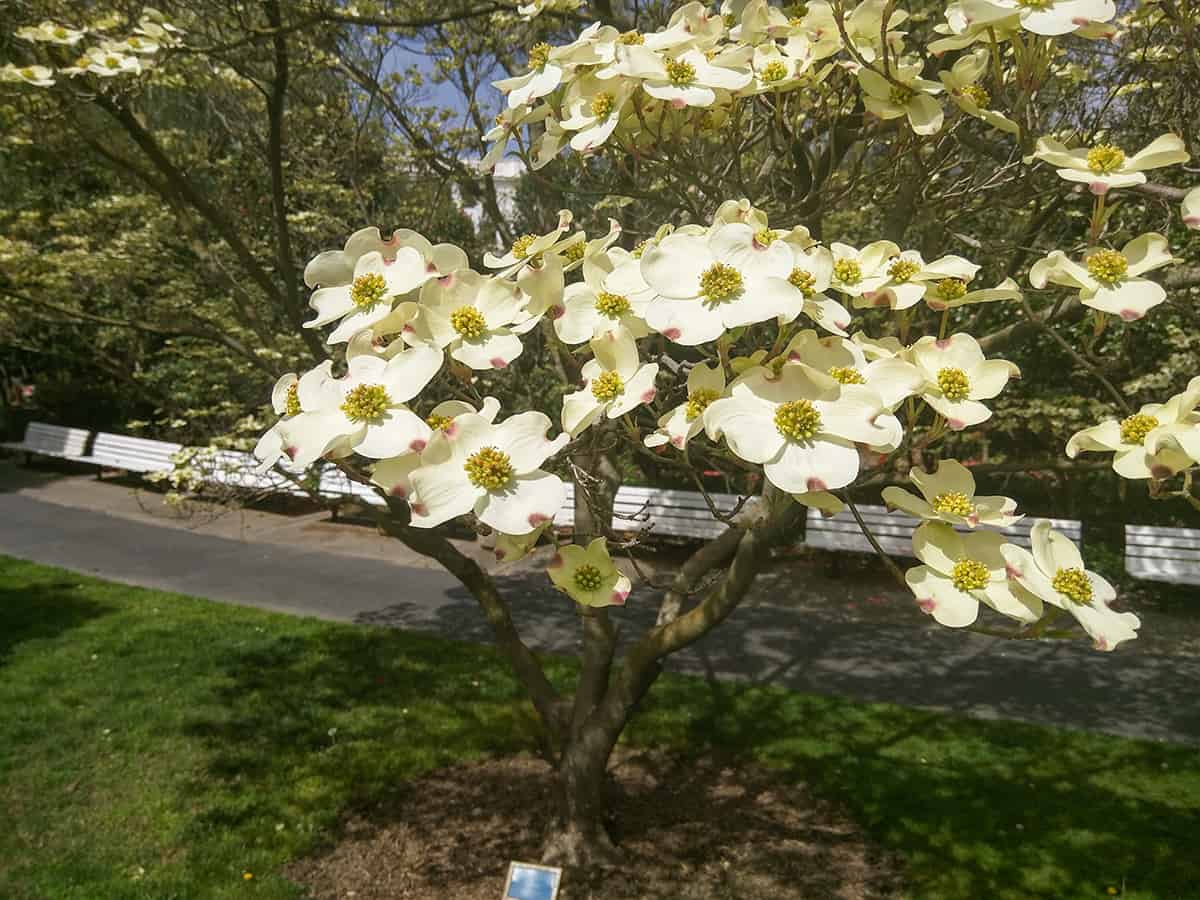
Life expectancy
The average life expectancy of a Flowering Dogwood tree is 80 years. However, this can be extended to around 125 years if the tree is grown in ideal conditions with a good level of care.
Ideal conditions
Flowering Dogwood should be grown in USDA hardiness zones 5 to 9. It can tolerate full sun, but this can shorten the lifespan of the tree. Instead, for a healthier specimen, position the Flowering Dogwood in a spot where it will receive partial shade. This should ideally look like around 4 hours each day of direct sunlight, and the remainder of the day can be in full or dappled shade. You will know if a Flowering Dogwood is getting too much sun because it will become dense.
The soil for this tree should be fertile and either acidic or neutral. It will adapt to poor soils, but again, this can affect the life expectancy of the tree. Ensure the soil is well draining because Flowering Dogwood will not tolerate waterlogged conditions and instead maintain evenly moist soil.
Avoid allowing the soil to dry out, as this can also limit life expectancy. This tree prefers to have cool roots in summer, so mulching will also help to improve the lifespan of the Flowering Dogwood.
Pink Dogwood (Cornus florida f. rubra)
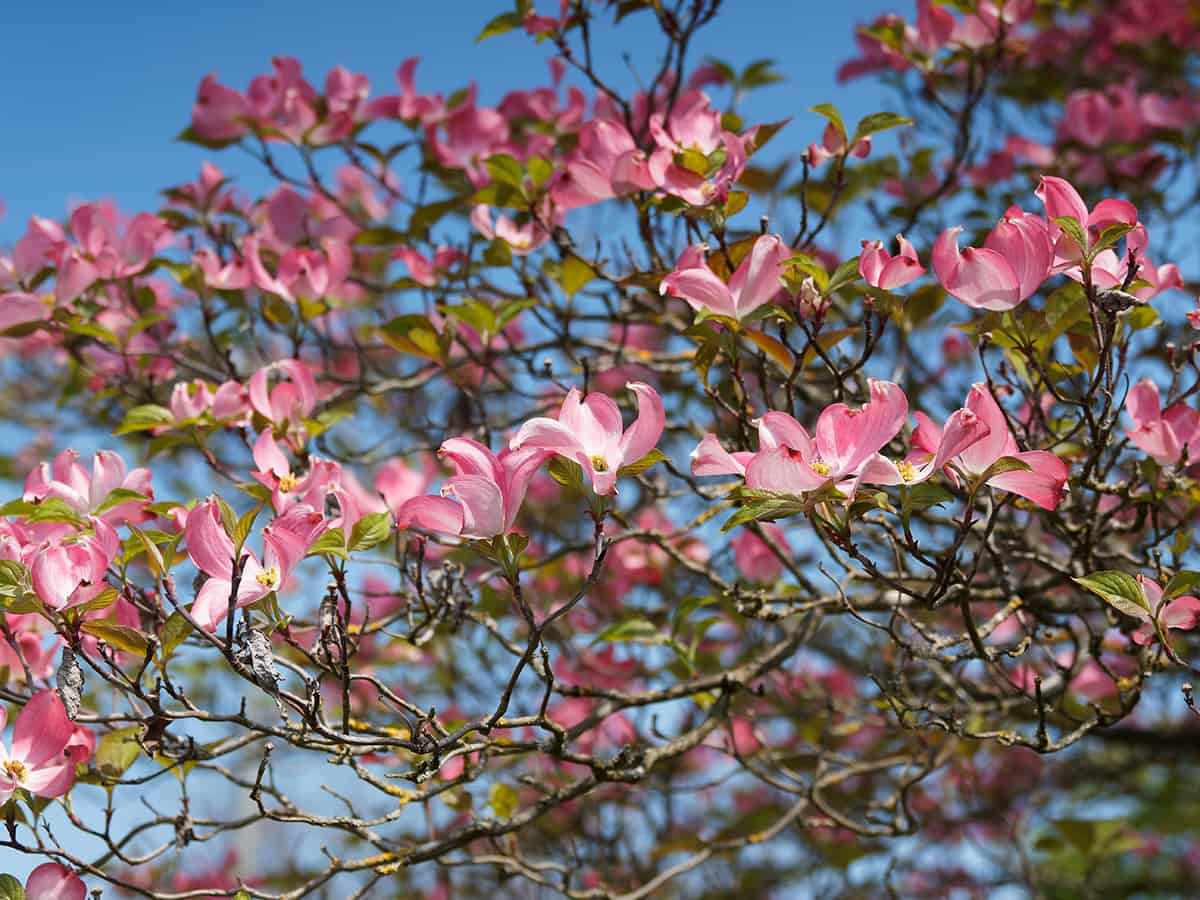
Life expectancy
This tree is a type of Flowering Dogwood that has a lifespan of between 80 to 100 years in ideal conditions. When its preferred conditions are not met, Pink Dogwoods can begin to die back at around 50 years of age.
Ideal conditions
Pink Dogwood can be grown in USDA hardiness zones 5 to 9. It is tolerant of full sun, but for the best chance at an extended lifespan, it should be grown in partial shade. Ensure the soil this tree is growing in is fertile by working in organic compost, and improve drainage if required by adding sand, perlite, or gravel to the soil. Avoid planting the tree in an exposed location.
Japanese Dogwood (Cornus kousa)

Life expectancy
The Japanese Dogwood tree can live for anywhere from 50 to 150 years, depending on the conditions and care it receives.
Ideal conditions
This tree is suitable for growing in USDA hardiness zones 5 to 8. It thrives in both full sun and partial shade, making it a good alternative to Flowering Dogwood if you have a bright and sunny spot to fill.
Getting the soil type right is essential for the longevity of this tree, so take care to amend poor soils before planting. Japanese Dogwood thrives in soils that are fertile, rich in organic matter, and well-draining.
They cannot cope with waterlogged soils, so avoid clay or compacted soils if you want a long-lived tree. You can improve drainage by mixing in sand or grit with your soil and improve fertility by working compost or well-rotted manure into the soil.
Japanese Dogwood trees will tolerate periods of drought once well established; however, this can weaken the tree and shorten its lifespan. Avoid allowing the soil to dry out and instead try to ensure consistently moist soil, especially when the tree is planted in full sun.
Pacific Dogwood (Cornus nuttallii)
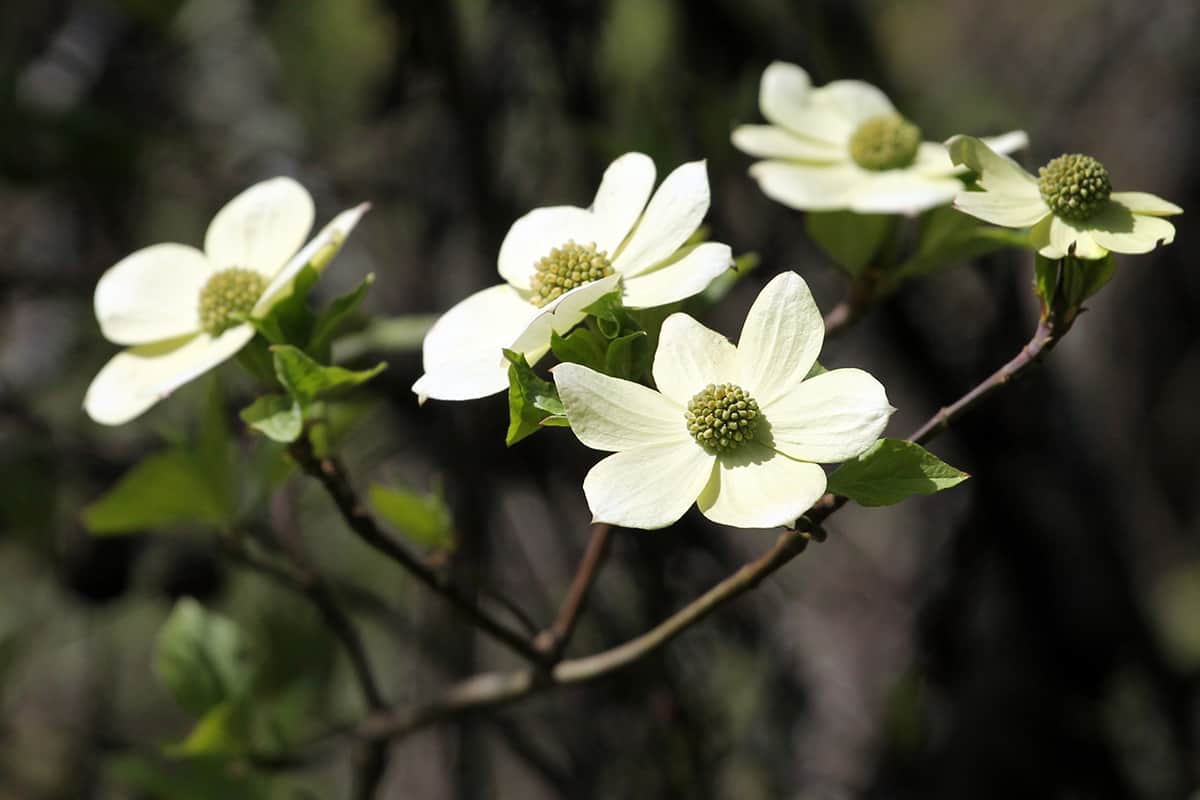
Life expectancy
The Pacific Dogwood can live for up to 150 years in ideal conditions. If its preferred conditions are not met, life expectancy can be considerably shortened by a number of decades.
Ideal conditions
This is a warm-weather tree that is suitable for growing in USDA hardiness zones 7 to 9. It can tolerate full sun or partial shade, but for an increased life expectancy, it should be grown in partial shade. The Pacific Dogwood has some tolerance to drought once mature. However, consistently moist soil should be maintained for best health.
Bloodtwig Dogwood (Cornus sanguina)
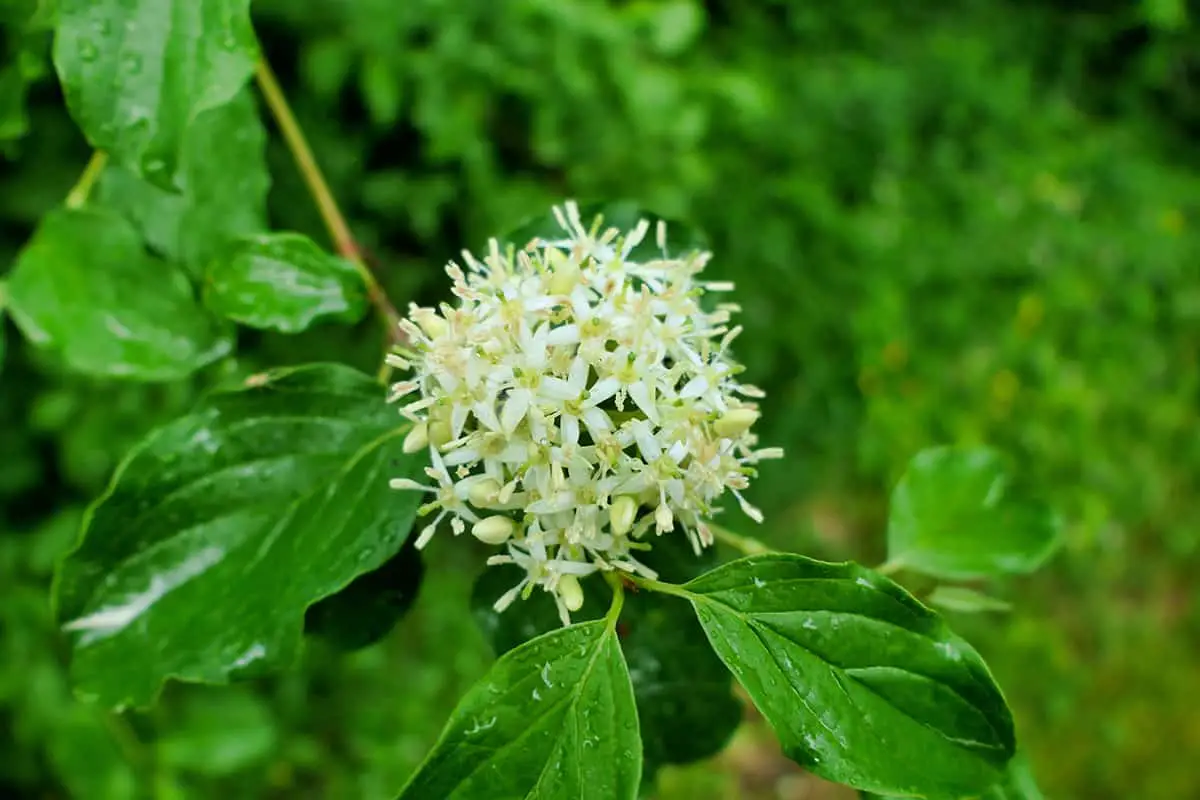
Life expectancy
Bloodtwig Dogwood can live for around 80 years in ideal conditions.
Ideal conditions
This shrub thrives in both full sun and partial shade. It is very hardy, being suitable for growing in USDA hardiness zones 4 to 7. Bloodtwig Dogwood is very adaptable to different types of soil, and it will grow in any soil that is consistently moist and well-draining. However, to give your Bloodtwig Dogwood the best chance at a long life, fertile soil that is organically rich is preferred.
Gray Dogwood (Cornus racemosa)
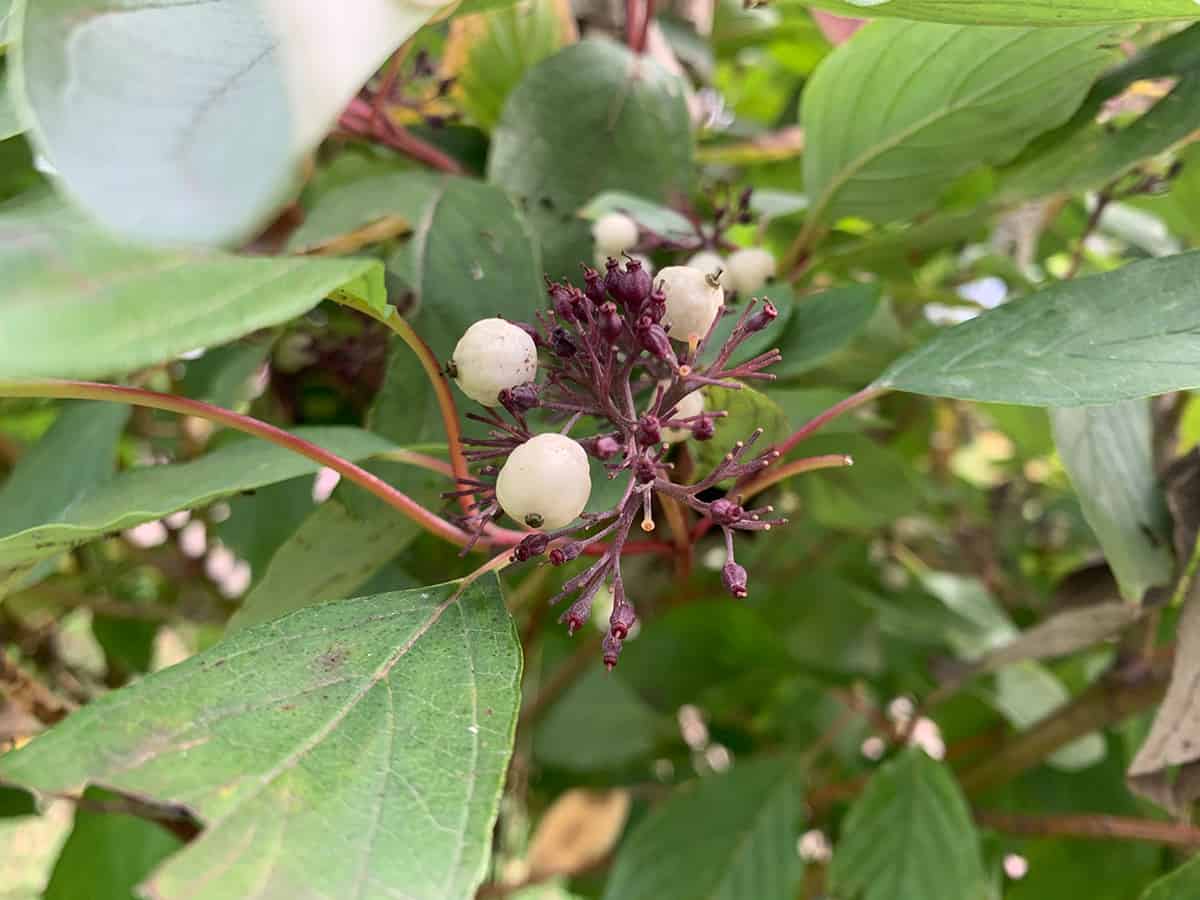
Life expectancy
Gray Dogwoods typically live for 60 to 80 years. They are tolerant of a wide range of conditions; however, to increase life expectancy you should aim to meet their preferred condition requirements.
Ideal conditions
Gray Dogwood can be grown in USDA hardiness zones 4 to 8. It is tolerant of full shade. However, it will thrive in full sun to partial shade. If you want to extend the likely lifespan of this plant, avoid positioning it in a heavy shade.
The soil Gray Dogwood is growing in should be consistently moist and well-draining. It is not fussy about fertility and will thrive in average soils. While this plant can tolerate both dry and wet soils, these conditions are not ideal. Instead, aim to avoid allowing the soil to completely dry out and ensure good drainage to prevent the soil from becoming waterlogged.


